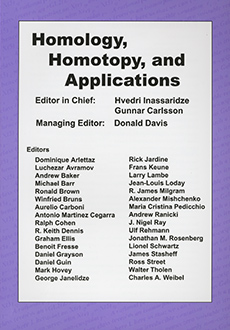Abstract
Combinatorial homotopical tools developed in previous works, and consisting essentially of intrinsic homotopy theories for simplicial complexes and directed simplicial complexes, can be applied to explore mathematical models representing images, or directed images, or concurrent processes.
An image, represented by a metric space $X$, can be explored at a variable resolution $\epsilon > 0$, by equipping it with a structure $t_\epsilon X$ of simplicial complex depending on $\epsilon $; this complex can be further analysed by homotophy groups $ \pi \ne (X) = \pi _n(t_\epsilon X)$ and homology groups $ H \ne (X) = H _n(t_\epsilon X). $ Loosely speaking, these objects detect singularities which can be captured by an $n$-dimensional grid, with edges bound by $\epsilon $; this works equally well for continuous or discrete regions of euclidean spaces.
Similarly, a directed image, represented by an "asymmetric metric space", produces a family of directed simplicial complexes $ s_\epsilon X $ and can be explored by the fundamental n-category $ \uparrow \Pi^\epsilon_n (X) $ of the latter. The same directed tools can be applied to combinatorial models of concurrent automata, like Chu-spaces.
Citation
Marco Grandis. "Ordinary and directed combinatorial homotopy, applied to image analysic and concurrency." Homology Homotopy Appl. 5 (2) 211 - 231, 2003.
Information





